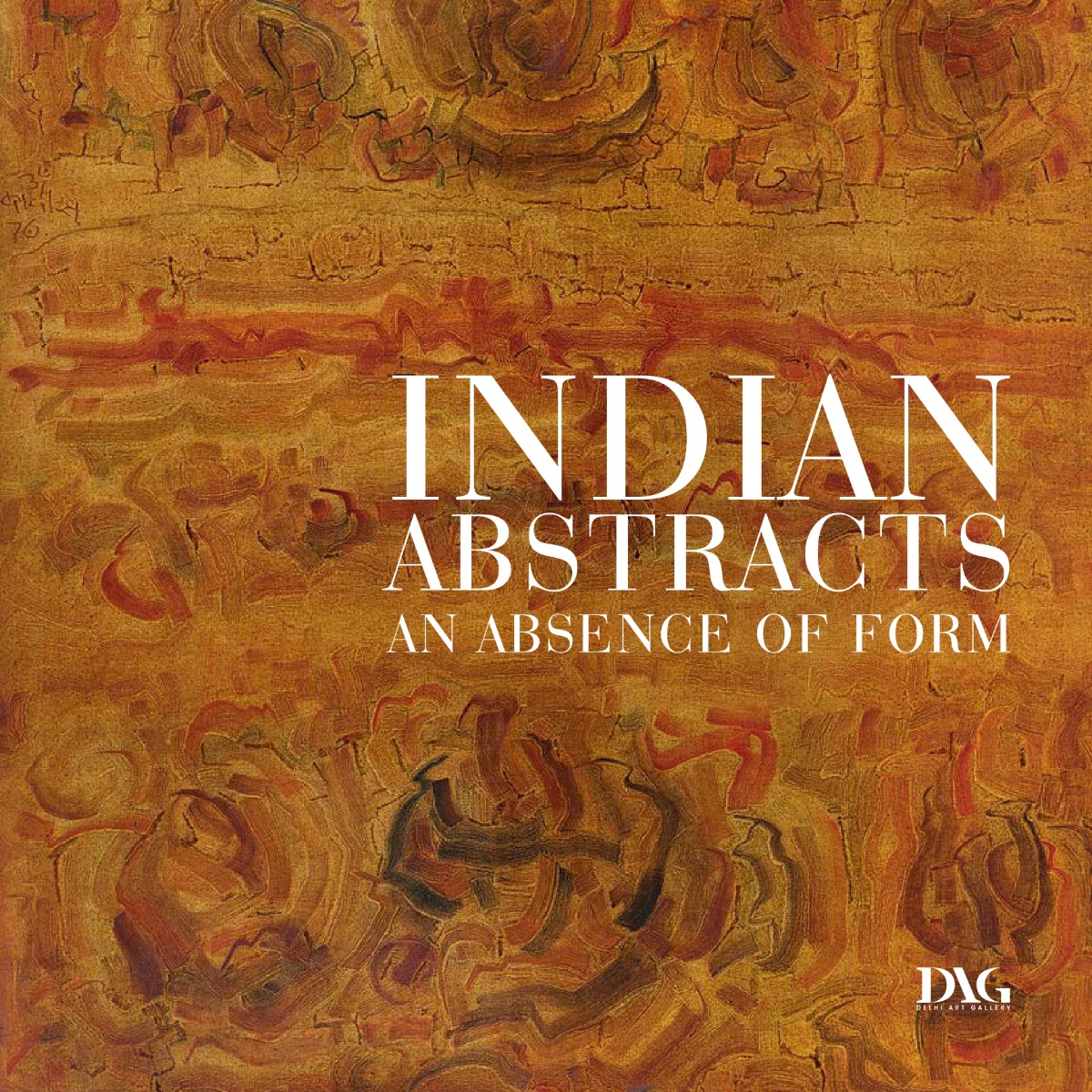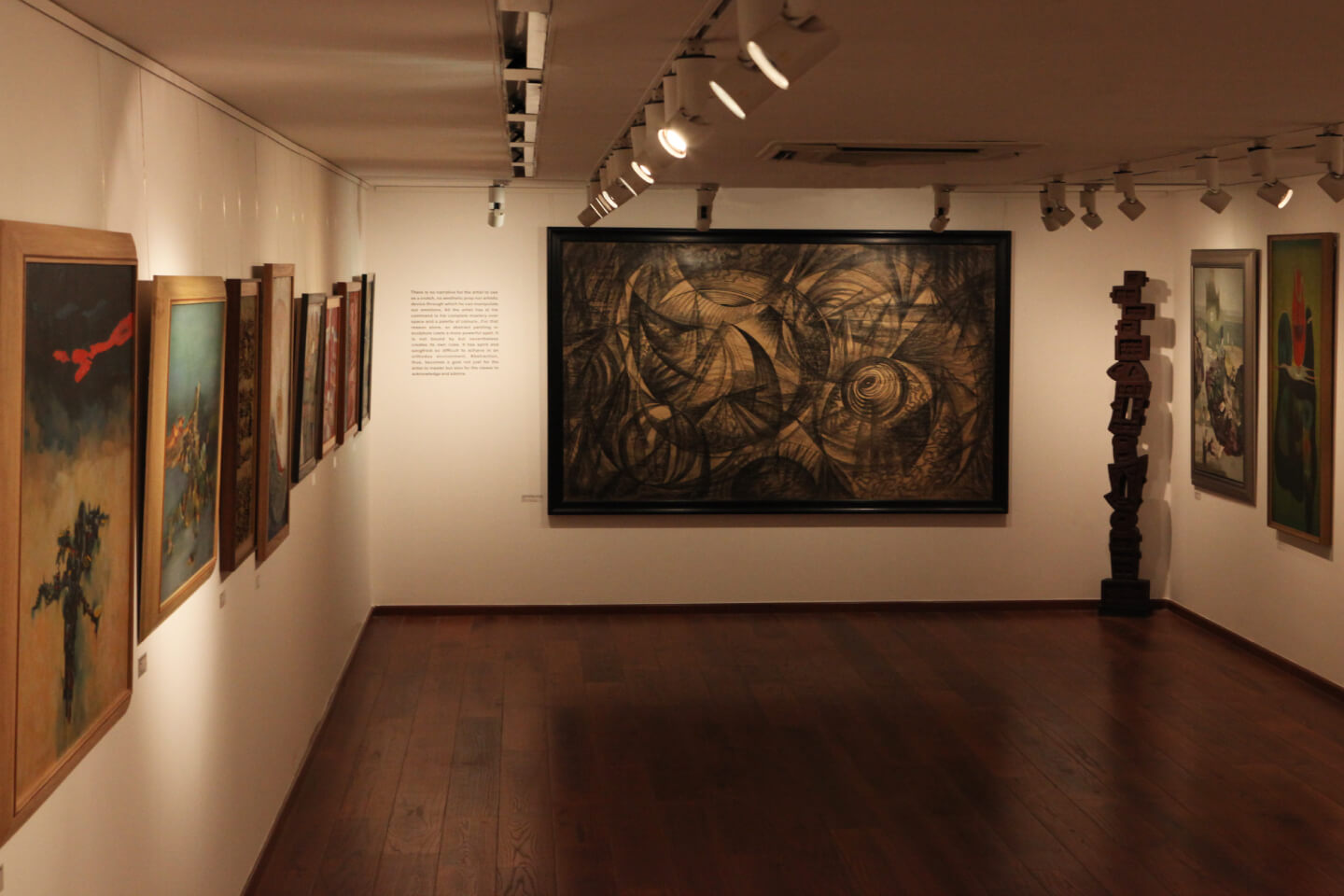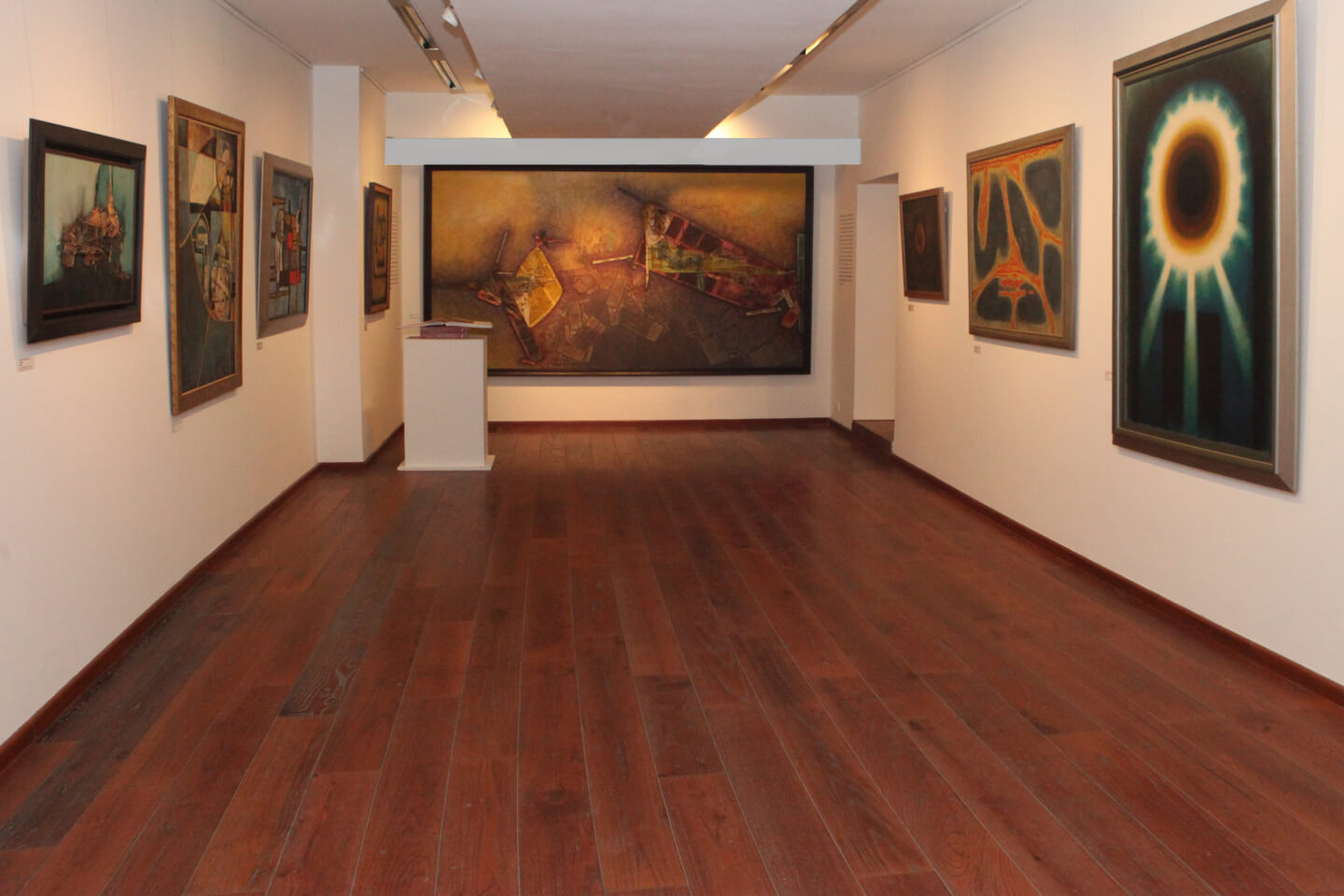The term ‘abstract’ has been loosely used, more so in the Indian context, where we have only a vague notion of what it implies. Even the slightest distortion in art is popularly referred to as abstraction. And while distortion ultimately results in abstraction, the two are at opposing ends of the visual pole as far as understanding the genre goes. Over several years, viewers have been guided almost by a gut instinct of what constitutes abstract art. And though one concedes that rigid compartments to demarcate genres are neither practical, nor desirable, some understanding of what constitutes abstract art is essential.
In the making of the accompanying book, the understanding of what one considers abstract, and others as merely distortion, guided the selection of works for inclusion in the exhibition. The elimination of other works that did not pass the abstract test was not without discussion, but the choice was to be guided by one principle alone—the complete absence of any familiar form that might render the work as an extreme form of distortion, but still not, nevertheless, abstract. As the exhibition plates in this volume indicate, we have not compromised with that norm, even at considerable personal anguish over the final choice—not so much in regard to the selected works as much as the eliminated.
Even in the short period of modern Indian abstraction, abstract artists produced a vast range of art. Some of it was rather more obviously informed by Western artists, and for most part it was inspired by them, but a language emerged that was also native, one qualified by Indian roots and steeped within an abstract lexicon that dated to the past, whether historical or mythological. Tantra-inspired art fulfills some of these conditions. Still other artists created a language which was more distinctly their own, and which they cultivated within the strict definition of the category for the length of their careers—pure abstractionists who must have had a difficult time explaining their theme to an Indian public that is more easily swayed by the decorative sentimentalism of a painting or sculpture. To practice in this milieu required a passion and determination that was unequivocal.
Featuring three hundred and fifty works by over sixty significant practitioners of Indian abstraction, Indian Abstracts: An Absence of Form explores the eventful and unique journey of abstraction in modern Indian art. Indian abstract artists drew on a range of influences in their work—Western abstract art, in particular the works of artists such as Klee, Rothko, Pollock or Calder, East-Asian influences, and significantly, a range of traditional, tribal, folk and tantric art—for their techniques, themes and approaches. The exhibition features prominent and significant Indian abstractionists recognised for the maturity of their imagery—such as V. S. Gaitonde, S. H. Raza, Ram Kumar, Nasreen Mohammedi, Zarina Hashmi, Jeram Patel, Shanti Dave, Ganesh Haloi, Krishna Reddy, J. Swaminathan, and V. Viswanadhan.
Additionally, it also brings together lesser-known abstract works of artists known for their fidelity to figurative or representative art—artists such as M. F. Husain, Somnath Hore, Dharmanarayan Dasgupta, Benode Behari Mukherjee, Sunil Das and Rabin Mondal—their abstract works add significantly to our understanding of Indian modernism’s journey.








